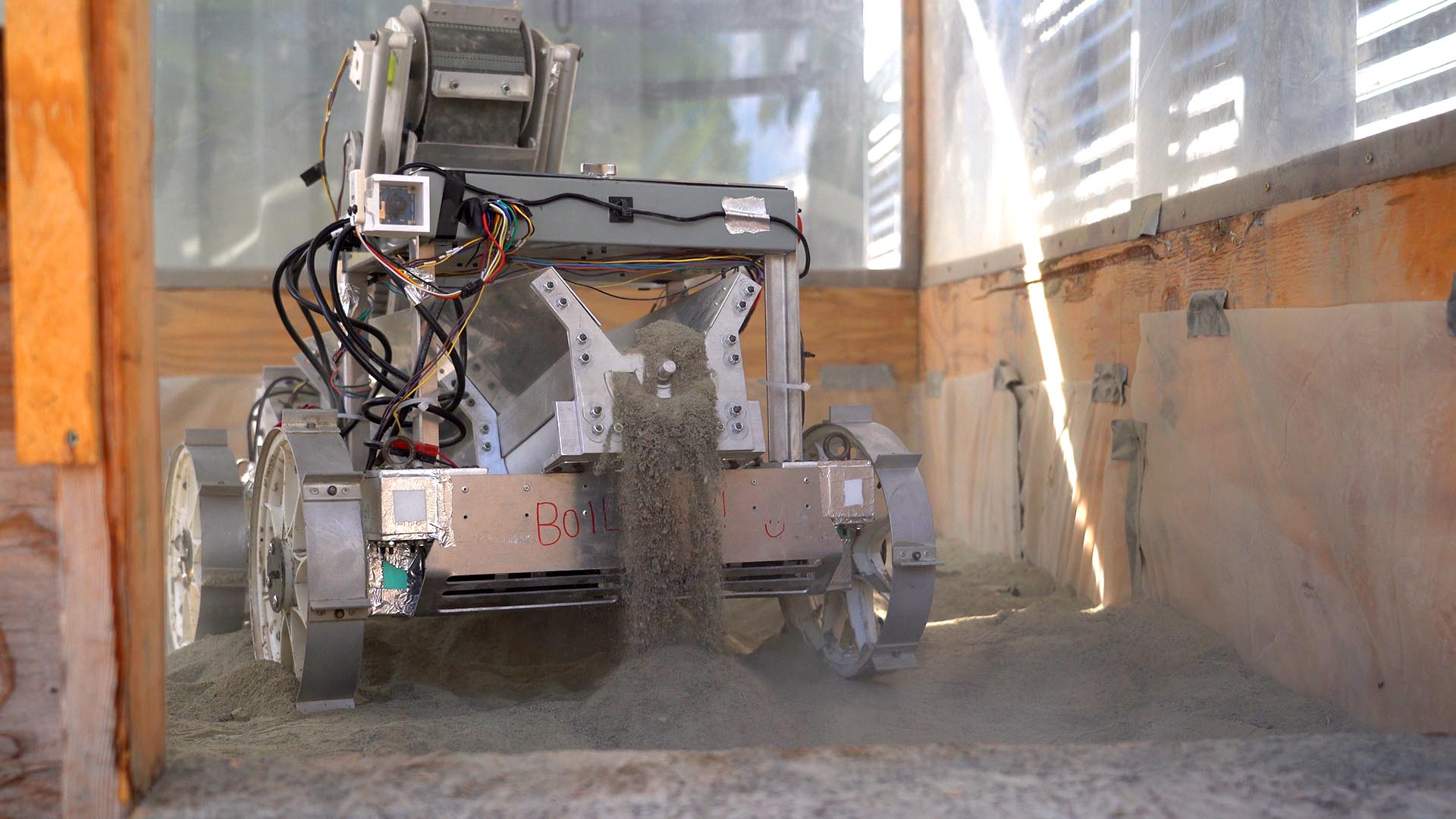Purdue Lunabotics mines moon dust for NASA
Purdue University is forever linked with the Moon, with Boilermakers as the first and last men to walk on the Moon. Now, the next lunar robot may also come from West Lafayette! Purdue Lunabotics students are building autonomous mining robots as part of the NASA Lunabotics Challenge.
“Purdue Lunabotics is an undergraduate student organization that designs and constructs a lunar mining robot for an annual NASA competition,” said Sofia Velarde, a junior in mechanical engineering and the club’s president. “NASA wants to colonize the Moon as part of the Artemis project, and a big aspect of that will be building structures out of lunar regolith. So these robots demonstrate how that can be done autonomously.”
Lunar soil, or “regolith,” is far finer that the soil on Earth — in fact, it’s the consistency of finely sifted flour. That makes mining on the Moon extremely challenging.
“It gets everywhere,” said Rachel Barder, a sophomore in mechanical engineering. “It’s so fine that it’s actually a respiratory irritant. We have to wear masks when we work with it, and during the competition, we wear full protective suits.”
“In fact, a big part of the NASA competition is regolith-proofing our robot,” said Velarde. “We have to make sure that our motors, power, hardware box, gears, and everything are encased and protected. You don’t want to be on the Moon, and then all of a sudden your motors and gears stop working.”

The other major aspect of the competition is autonomy. NASA wants students to design a robot that maps out its territory, digs into the regolith, and then deposits as much volume of the regolith as possible in a designated area — all with no human intervention.
To accomplish this, the students of Purdue Lunabotics start early. In the fall semester, they gather a team of mechanical engineers, robot technologists, software coders, electrical gurus, and more. They all work together to design the robot, staying within the guidelines given to them by NASA. Then in the spring, they physically manufacture the robot, integrate the systems, and start testing.
“We simulate the Moon in the parking lot of BIDC,” said Velarde. “It’s basically a sealed box that contains a simulant of the lunar soil, and it allows us to test the mechanics, the sensing, and the autonomous actions it needs to perform.”
Shoot for the moon
The 2024 NASA Lunabotics Challenge welcomed more than 40 university teams from across the country. They started at a qualifying event at the University of Central Florida, where many teams had the first opportunity to compete and see what other teams had created. “Our goal was to get in the top ten and move to the next round at Kennedy Space Center, which we did!” said Velarde.
Overall, Purdue Lunabotics finished fourth in the competition. In the individual portions, they placed 2nd in the Presentation and Demonstration category; 3rd in the Systems Engineering paper category; and 6th in Autonomy.
“We would have scored higher,” laughs Velarde. “But during the competition our robot used something called an AprilTag to locate itself, and we accidentally placed our AprilTag upside-down! We were wondering why the robot was executing its program in reverse! You can plan for a lot of things, but it’s always the thing you didn’t plan for that gets you.”
For the students of Purdue Lunabotics, the club is the perfect intersection of aerospace dreams and robotics expertise. “I did robotics in high school,” said Barder, “and I also love space. So when I found Lunabotics, it was the perfect thing. We also have our own Vertically Integrated Projects (VIP) class, which helps new students get involved.”
“I think a lot of us did robotics in high school, and when we get to Purdue we want to compete in something similar,” said Velarde. “If you’re interested in robotics — the mechanics, the programming, the wiring, the systems integration — you should join our club.”
“And also,” adds Barder, “building a rover is cool!”

Source: Purdue Lunabotics, purdue.edu/lunabotics
Instagram: @purduelunabotics
Writer: Jared Pike, jaredpike@purdue.edu
